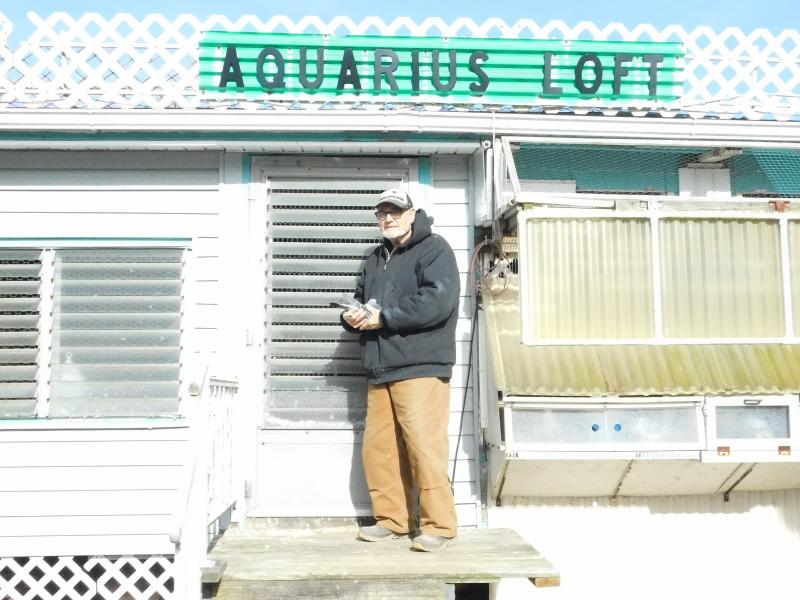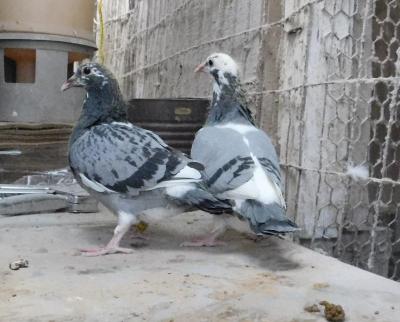Flying the coop: Pigeon racing for fun and glory
George Oliveira has been racing pigeons for decades.
When he started around age 14 or 15, there were nearly ten other pigeon racers in the neighborhood. Now, the hobby has dwindled, but there are still 8 or 9 members in the New Bedford Racing Pigeon Club, of which Oliveira is a member, in addition to a larger club in Rhode Island.
The group gets together for breakfast weekly, and participates in about 22 races a season, which runs from April to November.
“A lot of us old timers enjoy it,” Oliveira said. “This was pretty popular in this area growing up.”
Pigeon races range from 300 to more than 600 miles. Oliveira said that ahead of races, pigeon owners will load the birds up in a truck on its way to a destination as far away as Sandusky, Ohio, where the birds will be liberated the following morning for the journey home. Each person can send up to 20 birds, and many races have more than 1,000 participating pigeons. In the past, races included 5,000 pigeons.
Pigeons are much faster than one might assume from seeing them mosey around cities: With no wind, they can reach 40 miles per hour, and, with a good tailwind, up to 70.
“There’s no comparison,” Oliveira said. “When they get a tail wind, man, they get real high and they just book.”
Forty percent of a pigeon’s body weight is its pectoral muscle, which gives the birds the strength to fly for hours on end. The pigeons fly back to their homes, and “clock in” by flying over a special platform. Each pigeon has a chip around one leg that registers the exact time it returns.
From there, the exact distance from the liberation point to the platform is calculated, and the pigeon’s speed is calculated in yards per minute. Everyone who participated in the race gathers at the club, and the winner is calculated on a computer. Before they had this technology, all the race results had to be calculated by hand, so results wouldn’t be finalized until the following week.
“Boy, it was a long process,” Oliveira said.
The races are often decided by seconds, although some birds, happy to be home after a long race, play around for awhile before flying onto the platform and sometimes lose the race in the process.
Oliveira has two coops — a racing coop, and a retirement coop. Most pigeons have a racing career of about three or four years, but some can race even longer. He also raises new baby pigeons each year from his champion birds.
Pigeons don’t rely on pure instinct, however.
“They’ve got built in GPS, but you have to cultivate it,” Oliveira said. The pigeons are trained from a young age by being released first a mile away from their home, then two miles, and so on.
Oliveira trains his birds daily by releasing them about 60 miles from home — a service he provides for other racers as well. It’s a way for him to make a little money, and also helps out other pigeon racers who may not have the time to train their pigeons every day in addition to working.
His best bird, now retired, is “Magic Johnson,” who was the 2012 Champion Young Bird. Magic Johnson came in first place in two 130 mile races and a 160 mile race, and fifth in a 300 mile race. The champion birds are those who are the fastest across a season.
For Oliveira, pigeon racing is more than just a hobby — it also helped get him through his time in the military.
“When I was drafted and was in the army, I raced birds in Germany,” he said. “I had a nice time in Germany because I was able to get out.”
Oliveira said that he was able to be part of a community off base, and joined a pigeon racing club nearby. He even spent Christmas with a family he met through pigeon racing, and the club threw him a going away party when he returned to the states.
Although pigeons were not used by the army by the time Oliveira was drafted, the birds have an illustrious history of service. Pigeons were used for communication, and trained to return to special trailers which were moved around over time. Oliveira recalled the story of one pigeon who, despite being shot twice, flew 15 miles in 15 minutes to deliver a message and saved the lives of 100 soldiers by calling off an air raid.

















